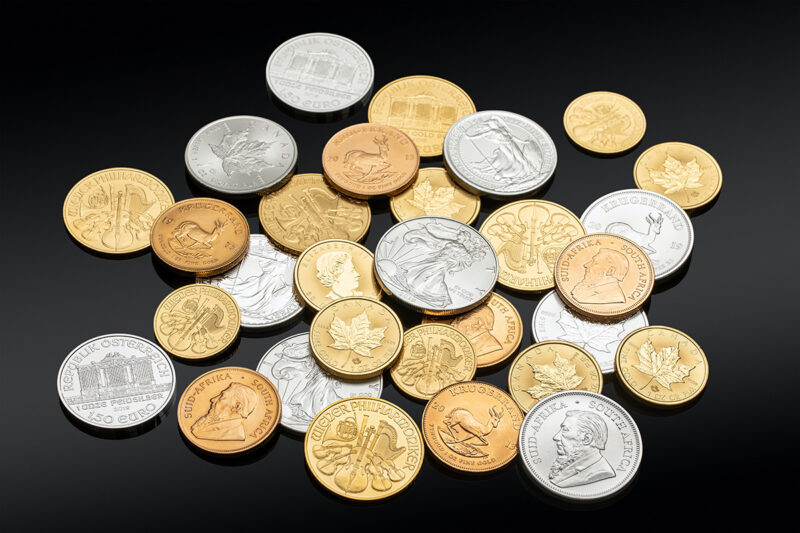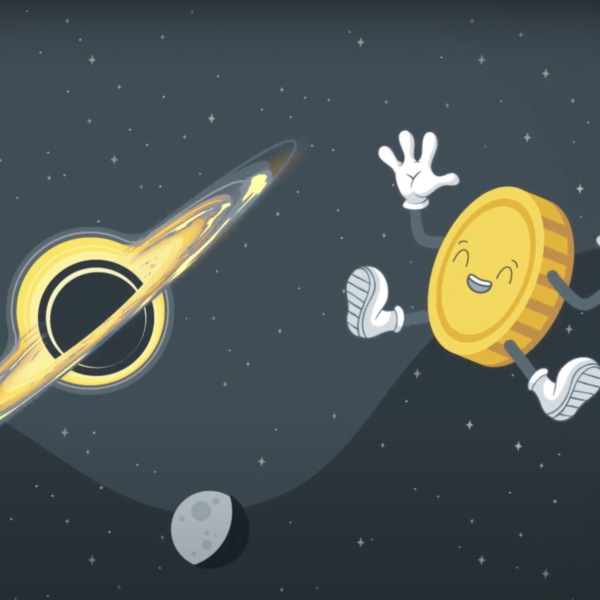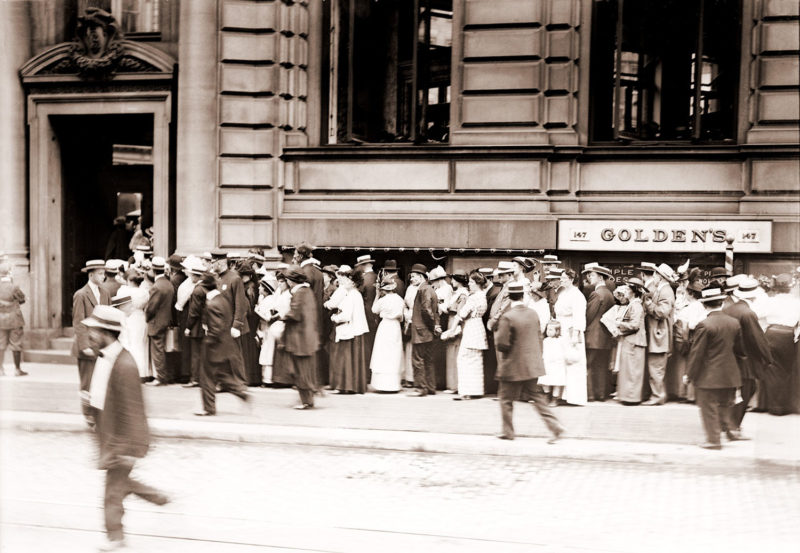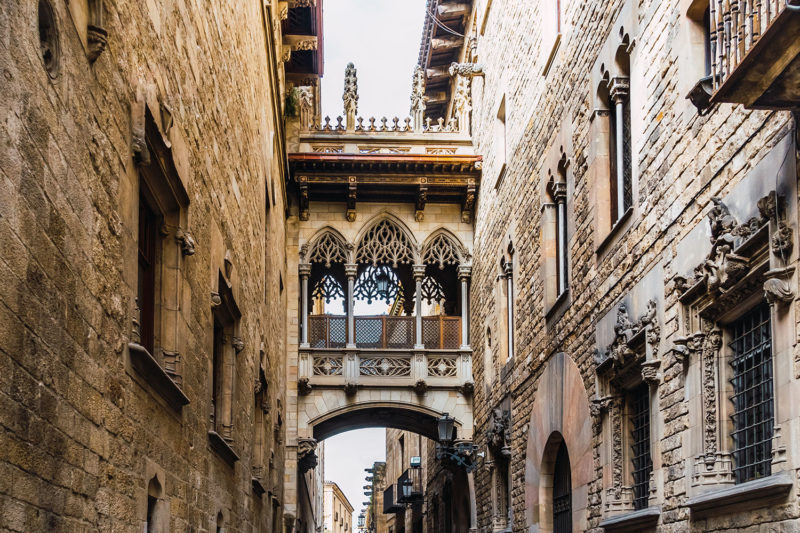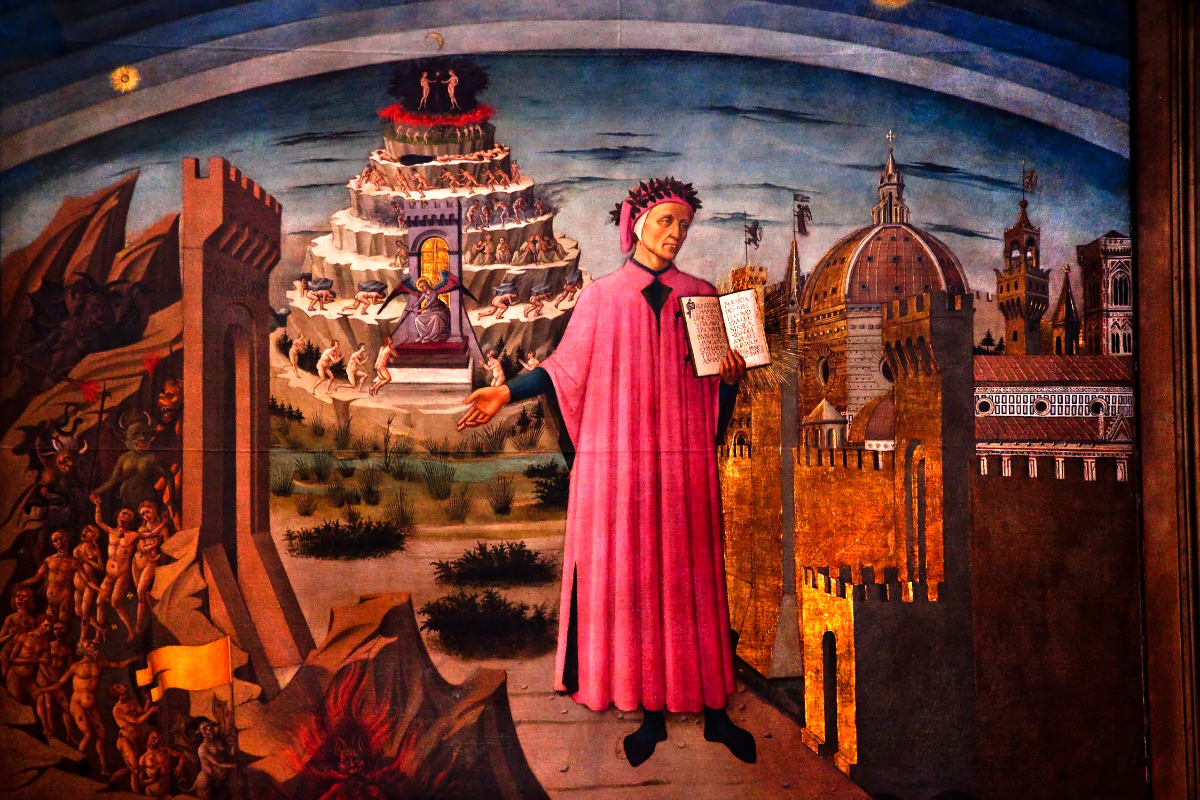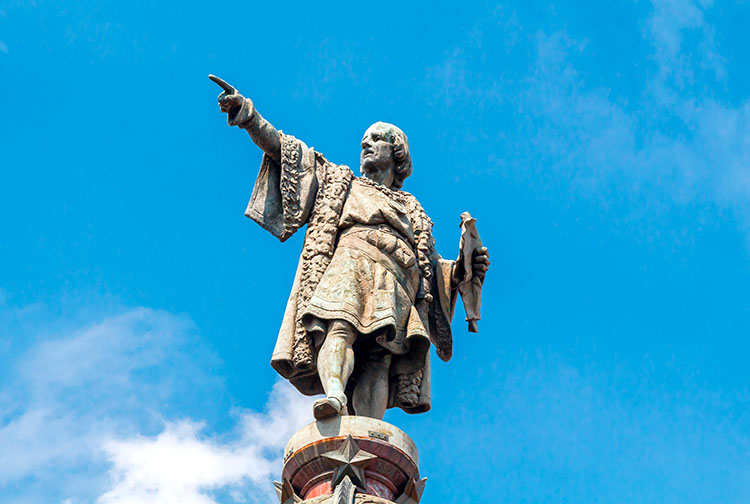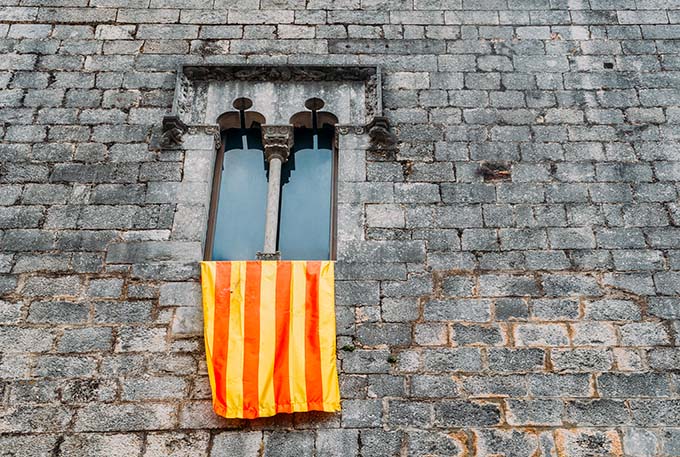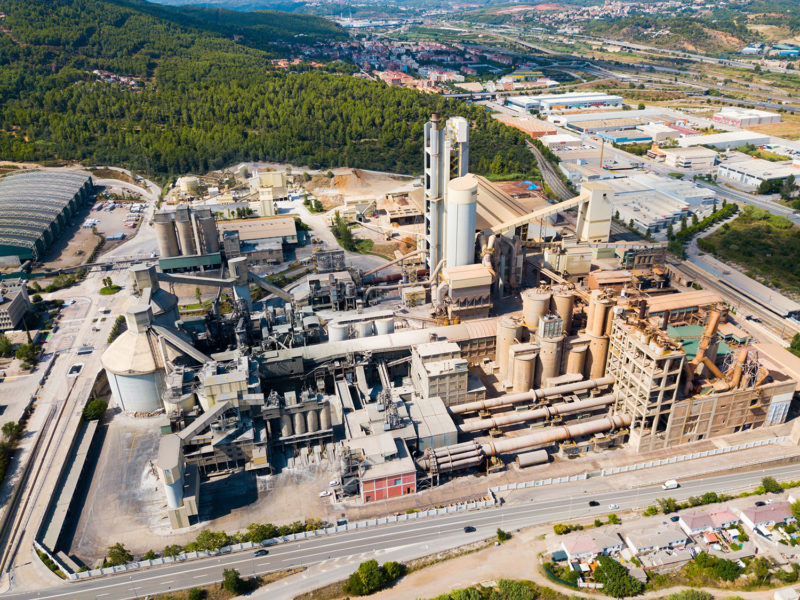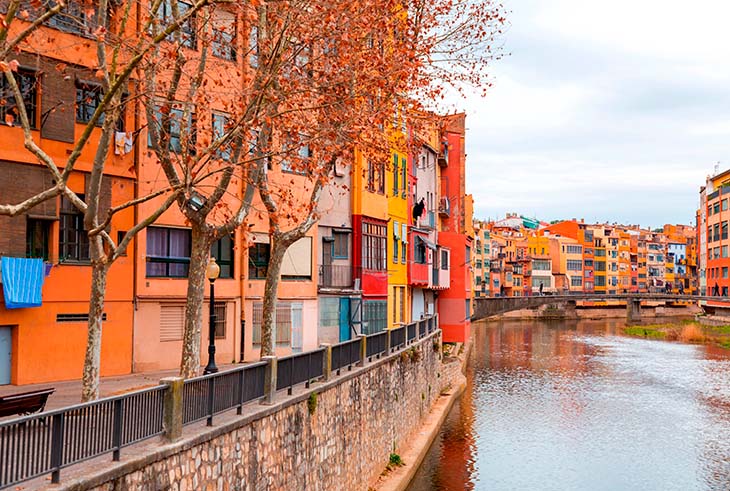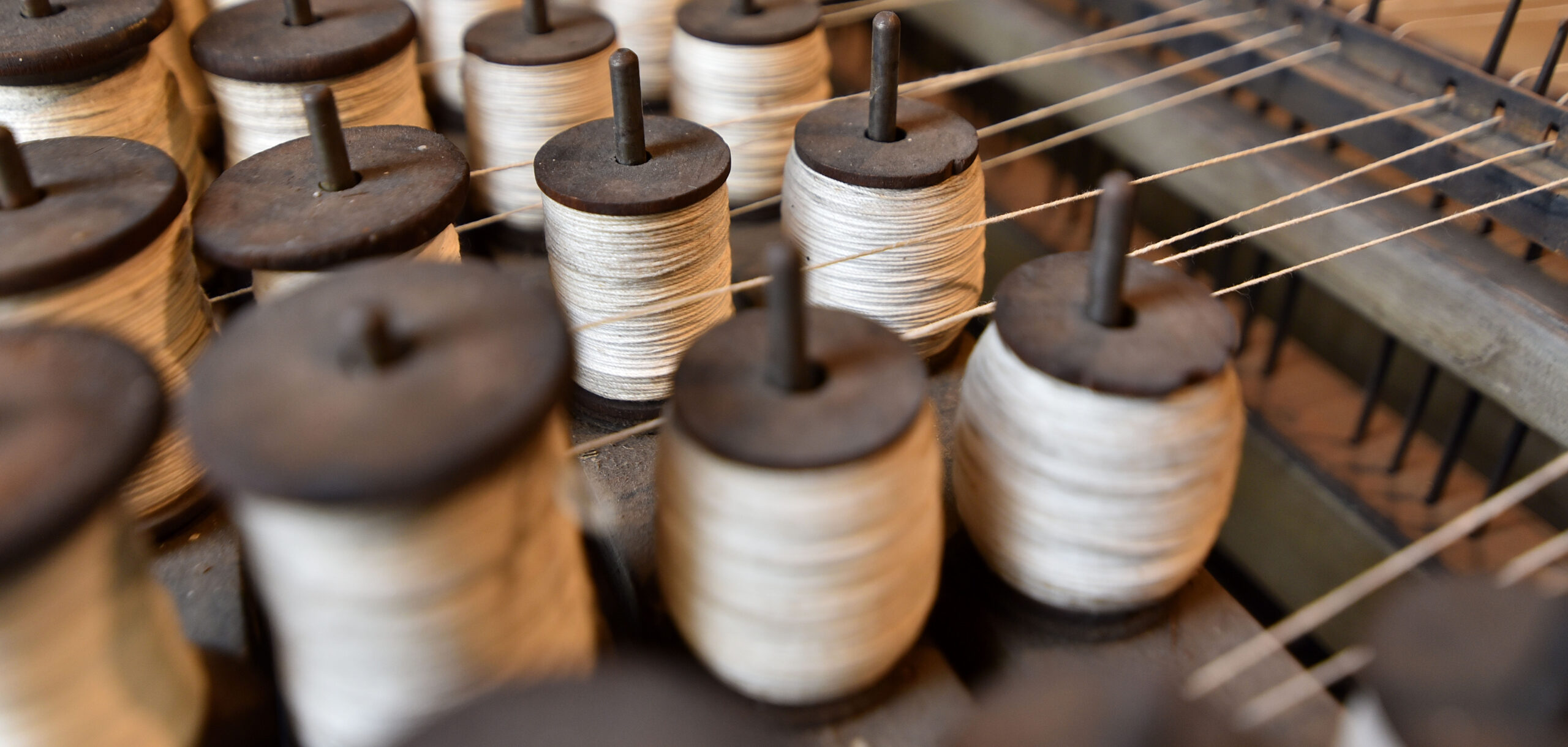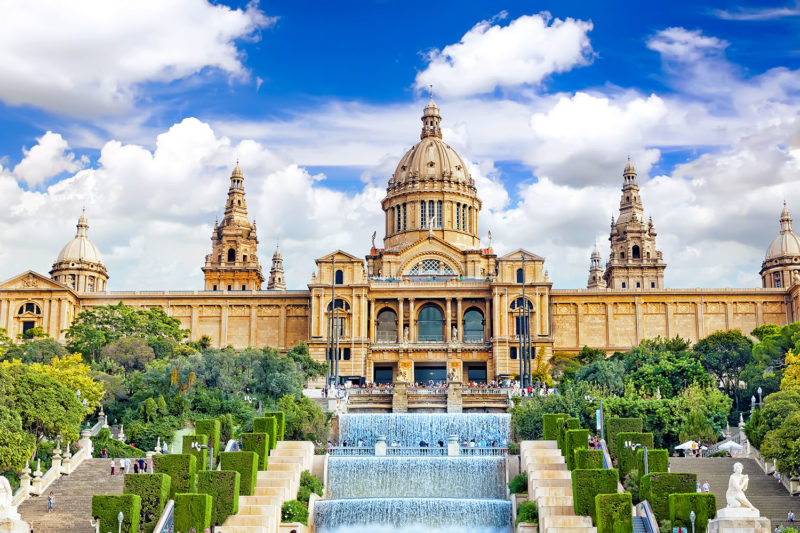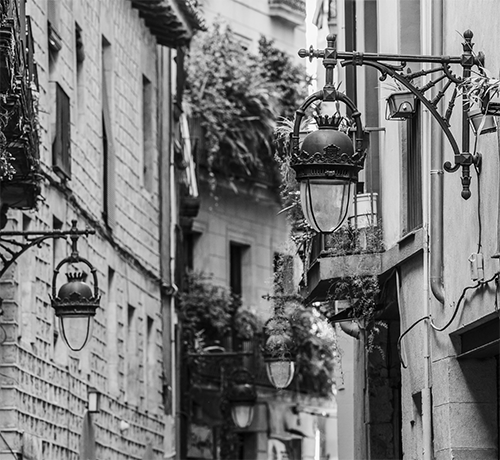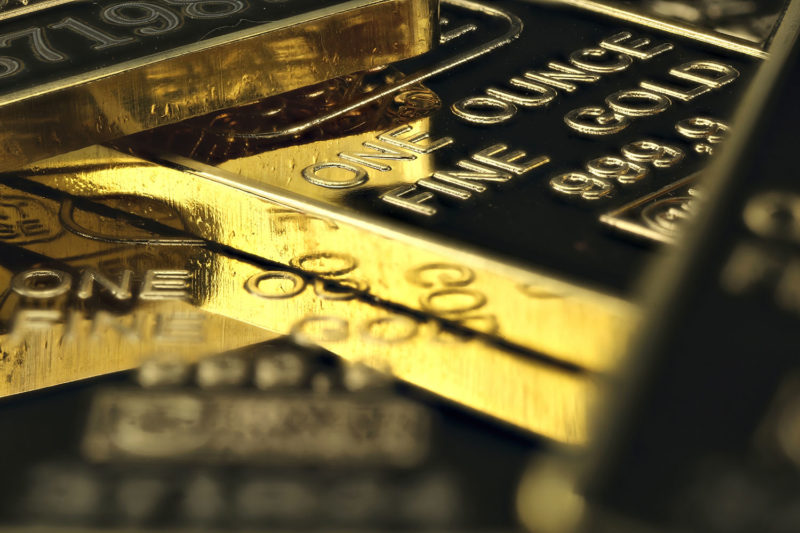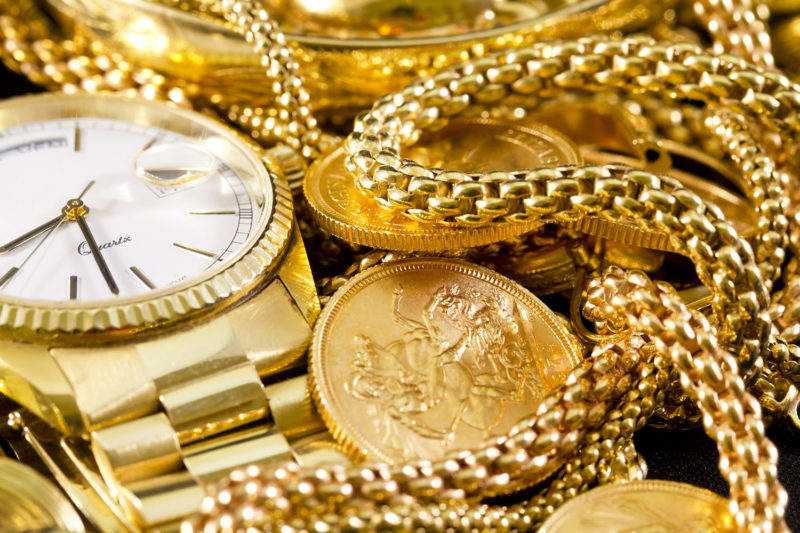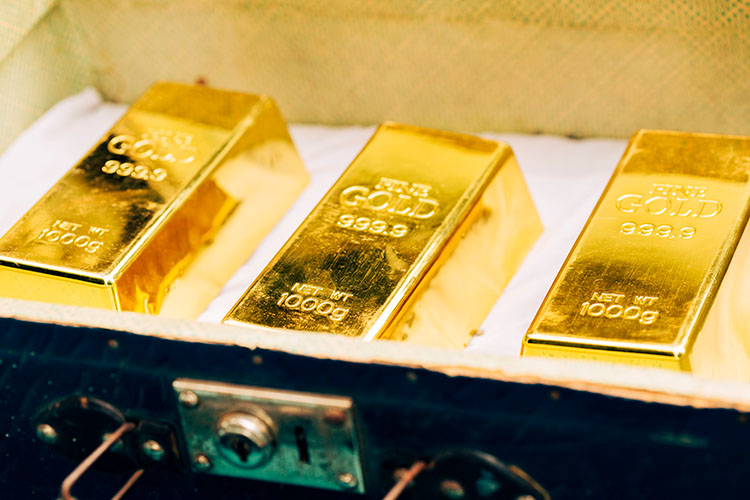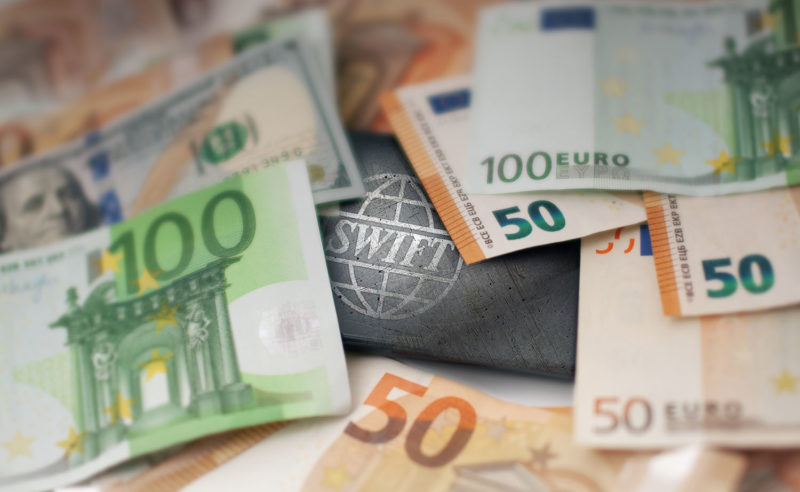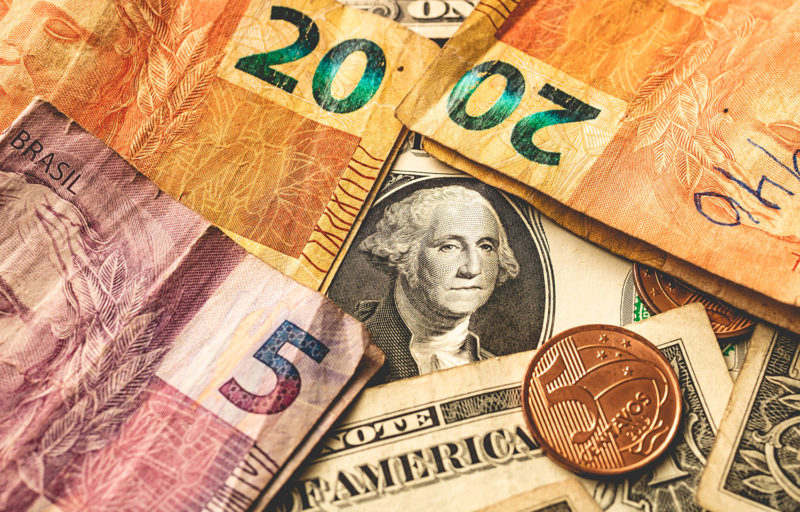When Sweden created central banks
Central banks have become an indispensable tool for the functioning and regulation of the global monetary system. But it all started with the financial panic triggered by Johan Palmstruch, banker and creator of the modern banknote.
Johan Palmstruch is remembered today as a pioneer, but he could also be considered a swindler. This 17th-century Dutch businessman and merchant modernised the world’s monetary and banking system almost unintentionally. Just for his own interests.
The first central bank
Sweden was embroiled in armed conflicts that required the crown to invest more and more money. So Palmstruch persuaded King Carl X Gustaf of Sweden to set up Stockholms Banco in 1657. It was a private bank, but the king was the CEO and half of the profits went to the crown. It was, therefore, the forerunner of central banking.
The business case was obvious because the Swedish government supported the bank. At that time there were copper, silver and gold coins in the country. Sweden was a major producer of copper, but debt from military adventurism kept accumulating and the parity of the copper coinage with silver and gold was becoming more and more difficult. Copper was depreciating due to the arrival of low-cost copper from Asia, which meant that 19-kilo copper coins had to be produced to maintain parity.
The role of deposits
In this context, Palmstruch introduced another novelty: he asked for permission to use customer deposits to give loans. This is quite normal now, but at the time it was innovative. He made a risk calculation and thought that a scenario where all customers would come forward to claim their money would never arise. He was wrong.
Copper continued to depreciate, and in 1660 the Swedish government decided to issue new coins. The bank’s customers asked to withdraw their old coins to spend them before they continued to lose value, but Palmstruch could not give everyone their money back. What was his next idea?
The creation of the modern banknote
Now, banknotes are our commonly used currency, but back then they were nothing more than a forward flight. A type of promissory note that he invented and got the crown to authorise it. The notes they printed were nothing more than a promise to pay the bearer. Palmstruchers, as they were known, were the first modern banknotes. We insist that this was a monetary innovation that was only born to plug a financial hole.
Paper money as a certificate of deposit had been in circulation for quite some time. But the Palmstruchers were the first banknotes in the current sense: issued on paper for a fixed amount, to the bearer, backed by the government and without the need to specify the depositor, the amount of the deposit or the interest. Was that enough? It wasn’t.
Bailout and central bank
Stockholm’s Bank issued too many banknotes and credit soared. The bank failed in 1664 and the government had to bail it out and return the money to the customers. Palmstruch went to prison, was released in 1670 and died a year later.
He had been convicted of fraud and, strangely enough, ended up creating the entities that would have to regulate that there was no fraud. As the Stockholms Banco was liquidated in 1667, the following year the government created the Bank of Stockholm. Now it was the first fully public central bank. With parliamentary control, to finance the government and with a ban on issuing banknotes.
To discover the best option to protect your savings, enter Preciosos 11Onze. We will help you buy the safe-haven asset par excellence, physical gold, at the best price.
The chronological arc from the Treaty of Tordesillas to the declaration of independence of the United States of America represents the first process – on a global scale – of the distribution and exploitation of the whole world by the European monarchies. During this period, the succulent income produced by the spoils of war or by the indiscriminate plundering of the native populations was transformed into an unprecedented binge of gold and silver, which was introduced into the European economy. For this reason, the construction of the first colonial empires was based on a mercantile economy that enabled them to live up to expectations.
From the outset, the European monarchies were convinced that all the territories of the world belonged to them by right of conquest. In this way, cartography allowed them to gradually extend and possess ownership of land, over which they legitimised themselves as possessors in order to impose – not always by force – their model of civilisation on the native societies.
This process of cultural supremacy was based on the religious certainty of questioning the true human nature of the natives. And the firm belief in this reasoning will motivate the European monarchies to project a geography of large spaces to be Christianised. The greed of the newcomers led to numerous abuses and genocides, but also to an unprecedented demographic catastrophe, as the territories of the new world were reduced to 80% of their native population.
The progressive development of maritime techniques – such as the improvement of the compass, the construction of caravels or the updating of world maps – will allow Europeans to be able to navigate all the seas and oceans that make up the planet in just a few years. This feat will result in the division of the world into two halves, two geographical lines which, drawn between the two poles, will give them the power, signed by the papal authority, to divide the world into zones for navigation, fishing and conquest. The first line will be 370 leagues west of the Cape Verde Islands, while the second will be set at 297.5 leagues east of the Molucca’s.
The discovery of important deposits of precious metals in America – between Mexico and Peru – or the arrival on the islands of Southeast Asian species, led to the foundation or re-foundation of important American, African or Asian cities, which acquired a different territorial role in order to ensure a regular flow of wealth to Europe. The European monarchies thus began to control all trade passing through their territories in order to protect their economic gains.
From the beginning of the 16th century until the mid-18th century, the first colonial empires would maintain a strict mercantile monopoly with their colonies, and trade with people or companies that were not subjects of or related to the Crown would be prohibited. Castile, for example, regarded the English, Dutch and French, not as competitors but as enemies and the cause of acts of piracy.
The colonial mercantilist system
Trade with the colonies was based on the premise that the colonists had to sell their raw materials – at a low price and with high taxes – exclusively to companies designated by the Crown. At the same time, the colonists would only be able to buy consumer goods manufactured by this select group of entrepreneurs. Therefore, monarchies will favour the unlimited enrichment of companies and individuals close to the state, since they will be denied competition. This mercantilist system will create useless needs for the natives and will seek to perpetually maintain the colonies underdeveloped – whether American, African or Asian – in order to nullify possible direct competition with the metropolis.
And to make matters worse, the senior civil servants close to the king’s council will also play a very important role in this innovative economic system, since they had the ability to speed up or delay bureaucratic procedures in order to favour one or the other. The emergence of illicit and parallel trade between colonies was therefore inevitable and led many entrepreneurs, both large and small, to seek ways of circumventing the bureaucratic controls imposed by the Crown itself.
Acting as nouveau riche, the first colonial empires – mainly Castile – will spend an indecent amount of economic resources to build their concept of civilisation. This obsession – sometimes uncontrolled – will lead them to embark on countless conflicts of all kinds, such as theological disputes, family conflicts, commercial affairs or lavish megalomaniac constructions.

“This mercantilist system will create useless needs for the natives and will seek to perpetually maintain colonies underdeveloped – both American, African and Asian – in order to nullify possible direct competitors with the metropolis”.
Financing the empire with precious metals
Coinciding with the time of greatest economic extraction from the American colonies – between the late 16th and early 17th centuries – Castile spent more than 7 million ducats to maintain its fleet in the Mediterranean during the famous Battle of Lepanto. In approximately seven years, a staggering 11.7 million ducats would be spent to finance the countless campaigns in Flanders.
To commemorate the victory in the battle of Saint-Quentin against the French troops, more than 6.5 million ducats will be spent to build the magnificent Royal Monastery of San Lorenzo de El Escorial. Thanks to the construction and launching of the Grande y Felicísima Armada, the well known Invincible Armada, 9 million ducats were sent directly to the bottom of the sea. And of course, this Catholic and universal civilisation will need to build a new capital on the banks of the Manzanares River. For the reader who is curious about the conversion, the ducat of the 16th and early 17th century would currently be equivalent to around 167.1 euros. True, the figures are… shocking!
Therefore, between 1500 and 1650, the Castilian monarchy – and by proximity, the rest of the European monarchies – lived in a veritable economic bubble generated by the massive influx of precious metals. The latest studies estimate that the Castilian Crown extracted some 17,000 tonnes of silver and 70 tonnes of gold from the American colonies. This metal binge led the state to have a distorted view of the real economy.
The paradox occurred when, despite the huge inflow of gold and silver and the collection of high taxes, they did not cover all the expenses incurred by the state. We should bear in mind that the Castilian Crown would only use this extraordinary wealth to finance all the delusions of grandeur of the Castilian elites, which in most cases would come into direct conflict with the real needs of the population. For this reason, when the oligarchies of a country were more interested in working for lavishness than for the real possibilities offered by the reinvestment of capital, all this leads to the destruction of the productive fabric itself.
Indebtedness of the Castilian Crown
By the mid-17th century, the Castilian Crown was in debt to the tune of more than 100 million ducats. This gigantic debt forced them to declare successive suspensions of payments. To plug this hole, the Crown was forced to issue a large amount of public debt, which would end up in the hands of the main European banks, such as the German banks – the Fuggers and the Welsers – and the Genoese banks of the Spínola, Centurione, Balbi, Strata and, above all, Gio Luca Pallavicino. The Crown will pay the Welsers by granting them the exploitation of the mines in Mexico and the right of conquest over extensive territories in what are now Venezuela and Colombia. For their part, the Fuggers will obtain all the commercial concessions over the territories of Chile and Peru. Today, they are some of the most powerful families of the continent. And, all the luxourious palaces of the strada nuova de Genova, principal artery of luxury in the city, still today, they constitute the biggest concentration of aristocratic residences in all of Europe.
Faced with the successive financial crises that the Castilian Crown began to suffer, many European businessmen living in the American colonies preferred not to ship their precious metals to Castilian ports – a monopoly granted in Cádiz and Seville – for fear of the massive confiscations decreed by the Crown. They, therefore, sought to invest their assets in other emerging sectors of the colonial economy at the end of the 17th century, such as agriculture, livestock and manufacturing production.
The Castilian Crown was therefore forced to look for new and regular sources of income. For this reason, it set in motion the ambitious plan of the king’s minister, the Count-Duke of Olivares, known as the Unión de Armas, which would require each kingdom that formed part of the Hispanic Monarchy – that is, mainly Portugal and the Crown of Aragon – to contribute a certain amount of money and soldiers.

“By the middle of the 17th century, the Castilian Crown would have an economic debt of more than 100 million ducats. This gigantic debt forced them to declare successive suspensions of payments”.
Relaxing the trade monopoly
Portugal, which had been part of the Hispanic Monarchy since the end of the 16th century, refused to grant any further economic contribution, given that Castile exploited its colonies, which led to a war that lasted more than 28 years. Finally, with the economic support of England and Holland, Portugal managed to free itself from the control of the Habsburgs, but the price it had to pay involved the cession of important territories in Brazil and the change of ownership of the colonies of Ceylon (now Sri Lanka), Cape Town, Goa, Bombay, Macao and Nagasaki, among others.
As for the Crown of Aragon, the Castilian oligarchy did not gauge the situation correctly when it accepted that King Philip IV would swear the Catalan constitutions, a sine qua non condition for obtaining the desired funds. Ignorance of the laws regulating the king’s functions within the Catalan territories would be the focus of important institutional discussions, given that the king – within the Principality – was obliged by law to explain the use of the resources granted. For their part, the Catalans were more interested in having their proposals for new Catalan constitutions approved and grievances addressed than in engaging in absurd wars.
But at the genesis of the institutional debate – between Castile and the Principality – we find a much deeper problem. If, since the end of the 16th century, Castile had moved towards a political system of an absolutist nature, where power resided in a single person, who decided without being accountable to any parliament, the opposite was true in the Principality, where the General Courts of Catalonia were the legislative body representing all strata of society, including the king.
The constant inflow of precious metals into the Castilian economy would remain stable until the mid-18th century, but only a very small percentage would remain within the Castilian economic system since the rest would continue to be used to pay off the monstrous debt of the State. Historiography estimates that it was not until 1820 that the Spanish state recovered from this huge expenditure, largely due to the fact that it had annexed the productive economy of the whole of the peninsular Mediterranean strip at the beginning of the 18th century.
The system of privileges and monopolies developed by the Bourbon trade policy continued to fail, and new agents had to be introduced to guarantee the viability of trade with America. Therefore, with the Royal Decree of Free Trade of 2 February 1778, the monopoly of Cádiz and Seville was definitively broken and Catalonia’s direct trade with America was favoured, which provided a new way of doing business. Funnily enough, today, 34% of Spain’s GDP continues to be contributed by the productive economy of the entire Mediterranean peninsular strip. Therefore, nothing happens by chance…
11Onze is the community fintech of Catalonia. Open an account by downloading the super app El Canut for Android or iOS and join the revolution!
Leaving money to a Christian for his own benefit was considered usury, so loans could only be made to enemies in times of war. Loans condemned bankers to hell because they involved a double sin: stealing money from your brother and stealing time to repay the loan. And time only belongs to God.
The interest that bankers charge on the money they lend is at the heart of the banking business and has always been controversial. Currently, it is because money is created from nothing using the loan as an asset, as we explained in the first chapter of the El Diner series. But centuries ago, the discussion was moral: the Church considered usury. The Old Testament, in Exodus, was clear when it said: “If you lend money to any poor person of my people who lives with you, do not treat him like a moneylender, nor pay him interest” (Exodus 22: 24). The essential idea was clear, it was not right to enrich oneself with the needs of others. This precept directly attacks, therefore, the waterline of the banking business.
Towards the 12th century, the banking business began to flourish, but the Church continued to condemn bankers to hell. In the opinion of the ecclesiastics of the time, usury was a double sin because you were usurping money from a Christian, but you were also stealing the time that he should invest to earn that money that he should return to you. And there was one of the big problems: time only belonged to God. Therefore, with the interest on the loans, the bankers were robbing an equal and God.
The Jewish opportunity
The Church, therefore, prohibited loans with interest between Christians. They could make enemies, with the idea of weakening them. Christians could not make loans to Jews either, because the Church considered them brothers. In this way, so to speak, the market of potential clients for Christian bankers was significantly reduced. And it was, precisely, the Jews who took advantage of that market niche. It was then that their fame as lenders skyrocketed, placing themselves at the centre of the financial business ever since. They had no such qualms: they lent money to anyone who asked for it, in exchange for interest. All of this ended up forcing the Church to rectify. And she did it in a very ingenious way: creating Purgatory.
Bankers’ Purgatory
It was evident that the Church had lost a business opportunity for Christianity. But the potential bankers had no desire to go to hell. At that time, loans were seen as a way to take advantage of the weak and not as a way to allow someone to pursue an idea. That is to say, evidently, the concept of productive loans or entrepreneurs did not exist. In any case, the Church rectified it by creating Purgatory. The bankers would no longer be condemned to eternal Hell, but to a place where they would be temporarily until they could purge their sins and enter Heaven. The measure was based on the Tractatus de Purgatorio Sancti Patricii by the Irish clergyman H. de Saltrey, which explained the journey of a knight to purge his sins.
This is how the Church sought to accommodate usury and loans within the Faith. The idea spread among the clergy during the 13th century: bankers could now save themselves, and the Church began to build a much closer relationship with the power of money.
Why is the dollar called a dollar? Where did the most used currency in the world come from? The history of United States currency has a direct connection with the Hispanic empire of the 16th century.
Charles V was the emperor of the Holy Roman Empire, king of the Catalan-Aragonese Crown (because he was the grandson of Ferdinand the Catholic) and king of the Indies, which had been discovered by Christopher Columbus. And in a corner of this vast empire was born the currency that would eventually evolve to become the American dollar. How did this happen?
In Bohemia, today’s Czech Republic, there were silver mines that began to be used to make coins. Because of the name of the area, those coins were called Joachimstaler but, little by little, the name was reduced to Taler. These Talers spread across the Atlantic and, based on trading with the Dutch and British, they began to be referred to as Daler. From there it went to Spanish Daaler and then to Spanish Dollar. It was only necessary for the United States to be established in 1789, which made the Dollar the country’s currency.
And the dollar sign?
Well, everything indicates that it has to do with the symbology that appeared in the Hispanic Reales. There you could see the two columns of Hercules and the motto plus ultra, meaning that the Spanish had gone beyond the columns of Hercules. Because? Because in the past it was assumed that the columns of Hercules were on the cliffs of the Strait of Gibraltar, closing the access from the Mediterranean to the Atlantic. Therefore, to go beyond those columns was to go towards the unknown, which is why the Spanish motto represented the daring of having crossed the ocean to reach the Americas. The symbol of the dollar, therefore, would be the wrapped columns of Hercules.
To learn more about the history of the dollar, you can watch the following video by Arte TV.
According to UNHCR, 50% of refugee children are unable to attend primary school and 22% of young people are unable to attend secondary school. One of the most important rights of children, the right to education, is therefore violated. 11Onze Rolls Up its Sleeves collaborates with Better Shelter to build Shelter Schools for children in northern Syria affected by the earthquakes last February.
Syria has been in crisis for more than 12 years, with war and devastating earthquakes. As a result, some 7 million people are internally displaced. One of the most vulnerable groups is children who have lost not only their homes and families but also the chance to continue being children and to receive an education.
The role of education
A UNESCO report highlights the key role of education in creating a better future for everyone. Low levels of access to education and high levels of inequality in education increase the risk of violence and conflict. It is a fish that bites its own tail. Observed over 21 years, areas with very low rates of education were 50% more likely to experience conflict.
Which students are in classrooms
UNHCR estimates that, when there is a disaster, refugee pupils end up missing an average of three to four school years. And, of course, these are not normal classes. You can find children who have lost their families, who have suffered abuse, who have lost their homes and who may have disabilities.
Despite the difficulties, these classrooms can transform children. They can learn to read, write and do maths. If they do well, they will continue with specific subjects such as science, geography, and history. But they will also learn basic health care and hygiene. They will study human rights and how and from whom to get help. They are thus being prepared for a tough world that has already dealt them severe blows when they were very young.
But the role of teachers is not only to educate children, but to keep them in a safe space. This is also what the Shelter Schools that 11Onze Rolls Up its Sleeves promotes with Better Shelter are: places where nothing bad can happen to you.
What are the Better Shelter Schools like?
11Onze Rolls Up its Sleeves
From 11Onze we have decided to roll up our sleeves, and we want to build 50 Shelter Schools for the children of Northern Syria. This way we will be able to help 1,750 children. To make this possible, we need 100,000 euros that 11Onze Rolls Up its Sleeves, will send to Better Shelter to carry out the action on the ground. Can we count on you?
In the European Union, women earn on average 13% less than men. And the pay gap in Catalonia is even wider, reaching 20%. Latvia and Estonia are the only EU states with a higher pay gap. Fortunately, the problem could be reduced thanks to the new pay transparency rules.
According to the latest data from Idescat, women in Catalonia earn 20% less than men. While the average gross annual salary for men was over 30,000 euros in 2020, the average gross annual salary for women was less than 24,100 euros. This is significantly worse than in the European Union, where women earn on average 13% less than men per hour worked. In fact, Latvia and Estonia are the only EU states with a wider pay gap than Catalonia.
The principle of equal pay is enshrined in article 157 of the founding text of the European Union. However, the gender pay gap has barely decreased in a decade, from 15.8% in 2010 to 13% in 2020. This is why 22 February marks European Equal Pay Day, which aims to put the spotlight on the problem so that EU members take action.
It should be borne in mind that there are a number of inequalities underlying the pay gap. It is not only that women earn less than men when doing the same job. In addition, women are over-represented in relatively low-paid sectors such as care and education, while the so-called glass ceiling leads to the under-representation of women in managerial positions.
Transparency against inequality
Fortunately, the Czech presidency and the European Parliament reached a provisional agreement on pay transparency rules in December. This will empower women to apply the principle of equal pay for equal work through a set of binding measures on pay transparency.
To avoid discrimination, companies will have to ensure that their employees have access to the criteria for determining pay and possible pay increases. Employees and their representatives also have the right to request and receive information on their individual pay levels and on the average pay levels of employees performing the same work or work of equal value, broken down by gender.
Companies with more than 100 employees will also have to report on the pay gap between male and female workers. Where there is an unjustified difference in the average wage level between men and women of at least 5%, the employer must carry out an assessment including measures to correct the unjustified pay gap.
Penalties for violators
Employees whose employer has not respected the principle of equal pay are entitled to claim compensation. The courts may order the company to put an end to the infringement and take corrective measures. Both equality bodies and workers’ representatives will be able to act on behalf of one or more employees to enforce the principle of equal pay.
Hopefully, these are the first steps towards real equality between men and women in terms of pay and job opportunities. All that remains is for the EU member states to bring their legislation into line with the new directive. They have three years to do so.
It is curious that Luxembourg, the country with the highest average wage in the EU at more than 70,000 euros per year, is also the country with the smallest gender pay gap: women earn only 0.7% less than men, according to Eurostat.
11Onze is the community fintech of Catalonia. Open an account by downloading the super app El Canut for Android or iOS and join the revolution!
The date of 1714 lingers vividly in our memory. Little or much, everyone would know how to explain what it meant to Catalonia. Even so, this dark period in history began to change with the Royal Decree on free trade with America. This regulatory text would be the crack that would lead to industrialisation in our country. We find out about it from agent Oriol Garcia Farré.
After the war of 1714, Catalonia had been banned from direct trade with the American colonies, which meant a brutal impoverishment. From the 1750s onwards, this began to change. The system of privileges of Bourbon trade policy was failing, and the powers that were being forced to introduce new agents to guarantee the viability of trade with America.
Thus, in 1756 the Crown once again allowed ships to leave Catalan ports for the new continent, and in 1778 Carlos III signed the Royal Decree on free trade, putting an end to the monopoly of Cadiz and Seville and once again favouring trade from Catalonia. This marked the beginning of a significant export of agricultural products, such as wine, eau-de-vie, nuts and paper, which allowed Catalonia’s balance of trade to increase spectacularly. This was the true genesis of Catalonia’s industrialisation.
Merchants and Indianos, a chronicle of entrepreneurship
Merchants were the necessary driving force behind the modernisation of the country. The trading companies of the 18th century were the model to be followed for more than a century in organising exports and imports. The cotton trade with the colonies was extremely important for Catalonia to begin a process of mechanisation, which led to the beginning of the industrial revolution.
A few years later, a generation of entrepreneurs would shake up and transform the economic and social structures of Catalonia. The first to do so were Josep Bonaplata, Joan Vilaregut and Joan Rull, all three linked to textile manufacturing. In 1832 they created the first steam-powered textile industry in Spain, the Bonaplata Factory.
The idea was a turning point, the definitive step towards modernity. The technological innovation brought about by mechanisation enabled them to become leaders in their sector and to boost the entire textile industry in Catalonia. The restlessness, transformation and improvement that characterised that era are still in the DNA of Catalan commerce.
Steam, the key to the country’s industrialisation
The economy created by the use of steam made it necessary to move at greater speed. Technological innovation and entrepreneurial spirit had to be accompanied by a new transport system. It was the railway that brought the country’s main textile production centres to the port of Barcelona, thus providing the backbone of the whole territory.
Economic inequality manifests itself in various ways, and one of the most notable is the disparity in the costs of living between different social strata. One of the approaches that sheds light on this disparity is the Vimes Index, created by activist Jack Monroe based on the Vimes Boots Theory.
Sometimes writers and thinkers are the ones who provide a more lucid look at society. This is the case of the British writer Sir Terry Pratchet, who in one of his novels develops a conceptual tool to understand why it is more expensive to be poor. In the novels of the Discworld series, Inspector Samuel Vimes develops the Vimes Boot Theory. In summary, he comes to say that if a person has a low salary he will buy cheap boots, instead of expensive ones. But the poor quality of cheap boots will force you to buy boots more often, so in the medium term you will have spent more money on boots than someone who has enough money to buy good boots that won’t break.
This example, applied to all types of products, produces the paradox that, due to having little liquidity, one is forced to spend more and therefore remain poor. The idea behind the Vimes Index is simple but powerful: it suggests that being poor not only means having less money, but also comes with a series of additional costs and barriers that perpetuate the cycle of poverty. This concept has been widely adopted by economists and activists as a way to understand and address economic inequality from a more holistic perspective.
Why is it more expensive to be poor?
In addition to the example proposed by Vimes’ Theory (extrapolated to clothing, vehicles, computers or any other product) there are other variables that make the lives of people with few resources more expensive. For example, having low salaries or little assets, it is very common for these people to lack access to good loans and financial services. In this way, many ends up turning to high-interest lenders or falling for revolving cards. All of this can spiral into debt and increase costs in the long run.
Health and wellness costs also end up being higher, because people with low incomes do not usually have access to preventive medicine. They often do not have adequate nutrition either, because they cannot consume foods of the highest quality. All together results in a higher incidence of chronic diseases and injuries, which in turn generates additional costs in the form of medical treatments and loss of work productivity.
Jack Monroe, everyday inequality
This is the vision of economic activist Jack Monroe, who asked the Pratchett family for permission to create the Vimes Index. What Monroe points out is that it makes no sense for inflation to be calculated taking into account all types of products, because people with low incomes do not consume expensive products. And these expensive products are the ones that frequently have the smallest increases and attenuate the inflationary average. If rice has risen by 300% and champagne by 2%, truffles by 1% and caviar another 1%, statistics will say that prices have risen by 76%, but in reality the poor man’s effort has been triplicate.
The proposal of the Vimes Index is to calculate inflation only with essential products.
Activist Jack Monroe explains the Vimes Index at the 2022 Edinburgh Book Fair.
A representative shopping basket
The Vimes Index offers a valuable lens into understanding why being poor is more costly in modern society. By recognizing the multiple factors that contribute to this dynamic, from limited access to affordable products to the additional costs associated with poverty, we can move toward more effective solutions that address economic inequality comprehensively.
The perspective of activists like Jack Monroe reminds us that economic struggles play out in people’s everyday lives and that solutions must be both structural and practical. By including a variety of products and services in the representative shopping basket, we can obtain a more accurate picture of the challenges faced by low-income people and work toward a future where everyone has access to a dignified and prosperous life.
11Onze is the community fintech of Catalonia. Open an account by downloading the app El Canut for Android or iOS and join the revolution!
The World Gold Council produces a documentary in which the actor Idris Elba tours some key scenarios in the world of gold. South Africa, California, Ghana, Congo, London, Canada, and New Zealand are some settings for gold’s incredible journey across the planet and through history.
What role did Nelson Mandela have in the South African mining industry? How did gold contribute to ending apartheid? How many bars are held in the Bank of England and why? How long does it take for the elevator at the “La Ronde mine” in Canada to descend the more than 3 kilometres it must fall to the gold extraction galleries?
In this extraordinary documentary, Idris Elba (known for series such as The Wire or Luther) puts himself at the service of the World Gold Council to discover the history of gold and its relationship with humans. Multiple aspects are analysed: from the importance of gold for power to its use in beauty or current technology. Gold is omnipresent in the history of humanity, we attribute value to it and use it for a lot of things in our daily lives.
Gold: a journey can be viewed openly and with subtitles on the World Gold Council’s YouTube channel. We will find excellent photography and exciting moments such as when Elba, of Ghanaian origin, is received by the king of Ghana in the middle of a reception where gold is the absolute protagonist.
The importance of gold
The documentary also delves into the applications of gold in the progress of humanity. Gold nanoparticles are present in reagent tests to detect many diseases, including Covid. But they are also key to the circuits of all the technological devices we use, and will be essential for quantum computers. Gold has been, is and will be, therefore, an essential material for the industry.
But it also has collateral effects on the economic development of the population. Levi-Strauss owes his entire business to the California gold rush, which also caused the birth of San Francisco. And the same thing happened in Johannesburg, the capital of South Africa, created thanks to gold mining. Currently, in other areas of Africa, it is key to combat malaria and generating energy.
Gold: a journey is a very good way to open your eyes to the king metal. Having physical gold is not just a way to get rich or protect savings, as we do at Preciosos 11Onze. It is being part of a story that unites all of humanity throughout time, and this does not happen very often. Few things achieve such absolute consensus. There is no doubt about the value of gold. We are not only talking about the financial value, but also about the emotional, historical and industrial value of that metal that came from space to change life on Earth.
If you want to discover the best option to protect your savings, enter Preciosos 11Onze. We will help you buy at the best price the safe-haven asset par excellence: physical gold.
The emerging states that comprise the BRICS group represent five of the world’s largest economies. A rising force that aims to redefine the international political and economic order, hitherto dominated by organisations created by Western powers.
The association comprising Brazil, Russia, India, China and South Africa, a group of major emerging economies known as the BRICS, represents more than 40% of the population and almost 25% of the world’s GDP. A strategic alliance that has laid the foundations for a new international political and economic order, designed to offer an alternative to the Western model, until now subject to the hegemonic power of the United States and the dollar as the world’s reserve currency.
Many other countries have expressed interest in joining the bloc: Iran and Argentina applied for membership in 2022, while Saudi Arabia, Turkey, Algeria and Egypt have also expressed interest. Given that some of these countries are major oil producers, the impact that these accessions would have on strengthening the alliance’s sphere of influence cannot be underestimated.
Democratising globalisation
With the creation of a new development bank and a financial stability fund, the BRICS will play a key role in shaping the global financial system. The aim is to provide alternative sources of finance to developing countries. These initiatives are expected to challenge the status quo of traditional Western-dominated financial institutions such as the International Monetary Fund (IMF) and the World Bank.
The need to set up this alternative structure has arisen, in part, because the IMF has not adapted to the new economic situation of a multipolar world. The new emerging powers are no longer content to be treated as the backyard of the United States, countries where for decades governments have been set up, with the complicity of the IMF, to serve the interests of American corporations, as it is happening in Ukraine.
The persistent US veto of proposals to give emerging countries voting rights more in line with their weight in the world economy, together with the refusal to reform restrictive policies in the face of economic crises that ensure misery for the population and huge profits for multinationals, have spurred a paradigm shift that will rebalance the distribution of global power.
Disengaging from the dollar
Russia and China signed agreements decades ago to initiate de-dollarisation programmes to protect and shield their economies from US government and International Monetary Fund (IMF) sanctions. The trade war against China and the unprecedented economic sanctions against Russia as a result of the conflict in Ukraine have accelerated this process of de-dollarisation, which more and more countries are joining every day, concerned about the abuse of privilege by the American giant when it comes to militarising access to and the use of the dollar to serve its economic and geopolitical interests.
In this context, the BRICS are considering the creation of their own currency, a common currency as proposed by Brazilian President Lula da Silva, which would further weaken the ability of the United States to pursue its aggressive foreign policy. President Vladimir Putin announced in June 2022 that the idea would be discussed at the BRICS summit in South Africa in August 2023.
In addition, the central banks of China, Russia, Turkey, Uzbekistan, Qatar and India are buying and accumulating gold reserves in record amounts, the likes of which have not been seen for 55 years. A phenomenon that some geopolitical analysts see as an unmistakable sign that they are diversifying their economies to break free from the hegemony of the dollar.
On the other hand, the use of economic sanctions to exclude banks from the SWIFT interbank communications protocol has consolidated efforts to create alternative systems such as the Chinese (CIPS) or the Russian (SPFS), to which 52 financial entities from 12 countries already have access, and which is already available for the connection of banks from the five countries that make up the BRICS alliance.
11Onze is the community fintech of Catalonia. Open an account by downloading the super app El Canut for Android or iOS and join the revolution!
